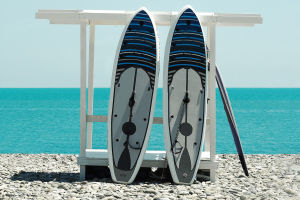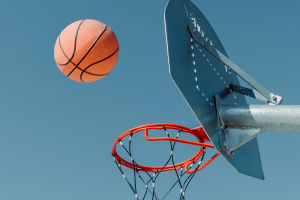When it comes to indoor sports, the right environment plays a crucial role in enhancing performance, safety, and overall enjoyment. Whether it's basketball, volleyball, or badminton, creating a space that is suitable for indoor sports requires careful consideration of various factors.
Adequate Space and Layout:
One of the primary considerations for an indoor sports facility is having sufficient space and an appropriate layout. The dimensions and design should cater to the specific sport being played, allowing players to move freely without any obstructions.
This entails ensuring proper court dimensions, appropriate distance from walls or other structures, and adequate room for spectators and equipment.
Flooring and Surface :
The choice of flooring and surface materials significantly impacts the safety and performance of athletes. Ideally, indoor sports facilities should have flooring that offers suitable traction, shock absorption, and durability.
For sports like basketball and volleyball, hardwood floors are commonly preferred due to their excellent shock absorption properties and uniformity. On the other hand, for sports like futsal or indoor soccer, synthetic turf or rubberized surfaces may be more appropriate.
Lighting:
Proper lighting is crucial for indoor sports venues, as it directly affects visibility and player performance. Ample and evenly distributed lighting should eliminate shadows, reduce glare, and ensure clear visibility of the playing area.
LED lighting has gained popularity in indoor sports facilities due to its energy efficiency, longevity, and ability to provide bright, consistent illumination.
Climate Control and Ventilation:
Maintaining a comfortable climate within an indoor sports facility is essential for both athletes and spectators. Adequate temperature control helps prevent discomfort and enhances performance.
Efficient ventilation systems are necessary to ensure good air quality, control humidity levels, and minimize the buildup of odors. This helps create a pleasant environment that promotes optimal physical exertion and reduces the risk of respiratory issues.
Safety Measures:
Safety should be a top priority in any indoor sports facility. The presence of protective padding on walls, columns, and other potential impact areas can prevent injuries during fast-paced sports.
Additionally, clear and visible signage indicating emergency exits, first aid stations, and fire safety equipment should be in place. Regular maintenance and inspections of equipment, flooring, and other facilities should also be conducted to minimize any potential hazards.
Designing an indoor sports facility that is suitable for various athletic activities requires careful consideration of several crucial elements.
From space and layout to flooring, lighting, climate control, and safety measures, each aspect contributes to the overall experience and performance of athletes.
By creating a space that prioritizes these factors, indoor sports enthusiasts can enjoy their favorite activities to the fullest.


